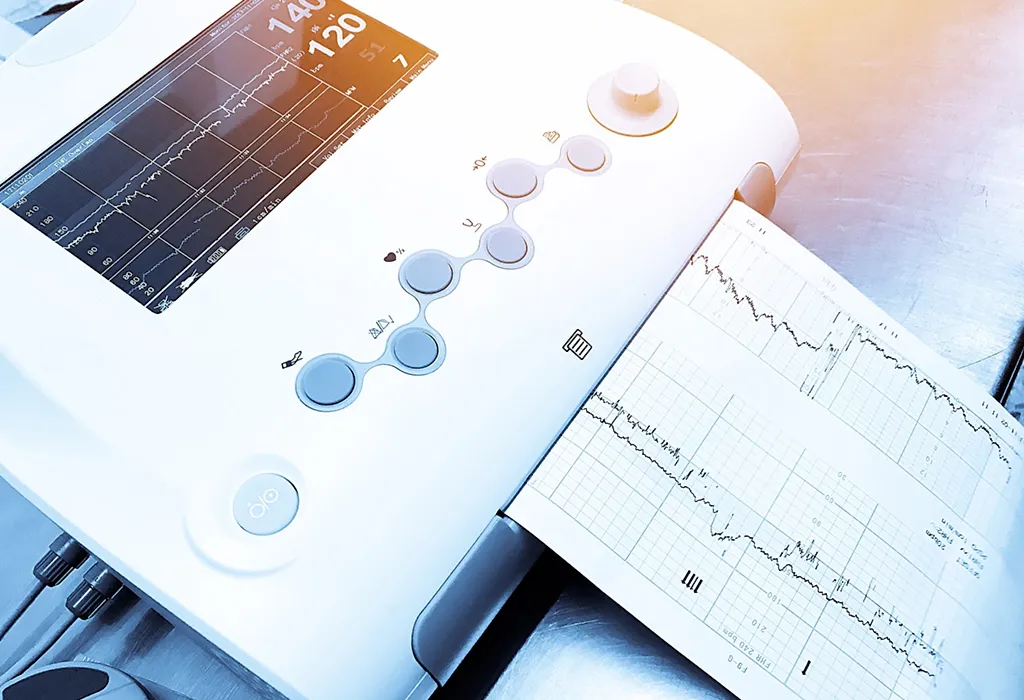Overdue Pregnancy: Causes, Symptoms, Risk, & What to Do

As the estimated delivery date (EDD) approaches, mothers, as well as families, are more than excited and expectant. But not all things have fixed timings! Good things make you wait a little longer, and thus so does pregnancy. Many women can go past their expected dates, and it is normal to give birth a week or two after your due date. While most pregnancies last around 40 weeks, some may go longer due to various reasons. This can be a stressful time for many women, as they may feel uncomfortable, anxious, and unsure about what to expect. In this article, we’ll explain the causes of overdue pregnancy, the symptoms to watch for, the possible risks, and what steps you can take if you’re pregnant and overdue.
How Due Date Is Calculated in Pregnancy?
Expected date of delivery (EDD) is usually calculated by one of the following methods:
Calculating the due date is based on the last menstrual period, to determine the unborn baby’s age. This is done by doing ultrasound scans to see how big the foetus is. Ultrasound or the USG applies sound waves that travel towards the baby, and return images that help estimate the body dimensions and organ development to the instrument. This helps in calculating the gestational age or period of pregnancy.
Generally, the date of the last menstrual period (LMP) is used to calculate the EDD. As the 14th day of mensuration marks ovulation, the EDD calculated may overestimate the age by two weeks (1).
When Is a Baby Considered to Be Overdue?
Generally, babies are born between the 37th and 40th weeks of gestation. The deliveries during this period are called ‘on term delivery’ or normal deliveries. Babies who are born before the 37th week are known as preterm or premature babies. When the pregnancy passes 42 weeks, it is known as an overdue pregnancy, and the babies born are called post-term babies (2).
Causes of an Overdue Pregnancy
Why do deliveries get overdue? There are several reasons for being overdue in pregnancy, some of which are listed below. It is worthwhile to remember that there is no accurate way to estimate the time of delivery.
1. Primigravida
The first pregnancy may sometimes be overdue (3).
2. Prior History
If a mother has had one overdue pregnancy, there are chances that subsequent pregnancies may be overdue pregnancies, too (4).
3. Baby Boy
While there is no scientific reason for this, it has been observed that overdue babies are mostly males. It is believed that this is because baby boys are typically larger and heavier than female babies (5).
4. Maternal Obesity
Maternal obesity has been known to delay pregnancy. This is because excess weight may come in the way of a body’s response to labour, and the uterine muscles may not contract as expected in overweight women (6).
5. Inaccurate EDD Calculation
A wrong estimation of the LMP or a delayed USG might lead to a mistakenly calculated EDD (7).
6. Position of the Baby
Babies who are in breech position (back or sacral presenting instead of head) may be delivered late.
7. Heredity
A family history of overdue pregnancies may be a cause of an overdue pregnancy.
8. Climate
Climate may have an impact on the duration of pregnancy, as high barometric pressure tends to induce labour, while the opposite is true of low barometric pressure.
9. Diseases
Sexually transmitted diseases (STDs), diseases of the liver, and systemic endocrine disorders may result in an overdue pregnancy.
10. Increased Maternal Age
It has been observed that when maternal age is over 35, the chances of an overdue pregnancy are higher.
11. Maternal Psychological Problems
Mothers who have developmental or psychological disorders, or those who harbour a strong fear of facing pregnancy or delivery-related complications such as miscarriages and stillbirths may have an overdue pregnancy.
12. Placental Causes
Rarely, placental causes may be responsible for an overdue pregnancy.
Signs and Symptoms of an Overdue Baby
Besides simply calculating the expected due date, a physical examination and laboratory investigations are used to identify an overdue pregnancy. Some symptoms of an overdue pregnancy are:
1. Dropping Abdominal Girth Measures
A reduction in the volume of amniotic fluid is suggested by a drop of 5-10 cm of abdominal circumference, or a drop of about one kilogram in the mother’s weight. This usually happens a day or so before delivery.
2. Change in Elasticity of the Skin
The skin over the belly which can be seen as tense and elastic returns to a normal texture, and may be an indication of an overdue pregnancy.
3. Start of Breast Milk Production
The production of breast milk generally begins around the time that the baby is expected to be delivered in a normally-timed delivery. The beginning of the production of breast milk may be an indication that the pregnancy is overdue.
4. Other Signs
A few signs noted by the doctor can be:
- Uterine cervix immaturity
- Reduced quantity of amniotic fluid
- Meconium staining or greenish colour of amniotic fluid
- Fore water missing
- Premature ageing of the placenta, leading to its inadequate functioning
- Foetus developing more cranial bones, which can pose a problem during normal delivery.
What Are the Risks of an Overdue Baby?
Here are some of the overdue pregnancy risks that are faced by the mother well as the child:
1. Risks for the Mother
An overdue baby is usually big in size. If delivered normally through the vagina, a big baby may cause delivery complications in the mother. Possible birth injuries include trauma to the perineal muscles, cervical tissue, or vaginal apparatus. This may result in excessive blood loss, or urinary problems like infections or retention. This causes difficulties in the progress of normal labour. Thus, to prevent complications, many obstetricians prefer an elective C-section for an overdue delivery (8).
2. Risk for the Baby
Delivering after 42 weeks carries certain risks for the baby as well. The mortality rate of post-term babies is nearly double that of term babies. Here are some of the possible complications that the baby may face (3):
- Foetal Macrosomia: Post-term babies may be born with a birth weight of more than 4.5 kg. This may lead to birth time injuries such as lacerations, excess blood loss, and metabolic complications in the baby (9).
- Placental Insufficiency: With increasing lapse of time after the due date, the placental function reduces, and as a result, oxygen and nutrient supply to the foetus is also hampered (3). This can affect the health of the baby.
- Permanent Neurological Damage or Cerebral Palsy: The risk of cerebral palsy increases after the due date. While there is no definitive proof for this, one explanation is that the brain becomes vulnerable to damage as the baby becomes overdue.
- Meconium Aspiration: An over dated baby usually passes stool in the amniotic fluid, which is called meconium. There are chances that the baby might breathe in this meconium, leading to respiratory complications and infections (10).
- Delayed or Stunted Growth: As the baby grows larger, it runs out of room in the uterus, which can stunt its growth.
- Reduced Amniotic Fluid: Amniotic fluid reduces after 42 weeks of pregnancy, which can lead to issues like poor functioning of the placenta (11).
- Foetal Distress: The baby might be in cardiac or respiratory distress. This can happen when the baby’s growth gets stunted (12).
- Stillbirth: The placenta begins to lose its efficiency due to reduced amniotic fluid. This causes problems for the baby, as it will then have trouble getting its required nutrients and oxygen, which may lead to a stillbirth.
Tips to Survive an Overdue Pregnancy
While waiting for labour to start, it’s important to stay calm and take care of your body and mind. Here are some tips to help you manage this final stretch with comfort.
What Can Doctors Do?
Your doctor will perform an analysis after 42 weeks or pregnancy (about twice a week). This is a cervical examination to see whether it has thinned and widened (dilated) to prepare for labour.
Your baby may be monitored by one of the following methods:
1. Non-Stress Test (NST) or Cardiotopograph (CTG)
The heart rate of the baby is estimated to check its health (13).
2. Monitoring the Biophysical Profile
A biophysical profile is more reliable than a non-stress test. In this test, an ultrasound scan is done, and certain physical features are noted, such as:
- Baby’s movements
- Amniotic fluid
- Baby’s muscle tone
- Baby’s respiratory activity
3. Amniotic Fluid Index or AFI
An ultrasound helps determine the quantity of amniotic fluid, which in turn confirms the adequate functioning of the placenta.
What Can a Pregnant Woman Do?
It is a common dilemma among expecting mothers when they ask themselves, “What to do when the baby is overdue?” Counting the foetal movements is a simple way to know if the child is healthy. When the due date has passed, the infant should be monitored closely. A healthy baby often moves frequently, whereas a baby that is sick tends to be less active.
Inducing Labour in Post-Term Pregnancy
It should be a matter of concern when a pregnancy continues for more than 10 days without signs of labour. The methods of inducing labour medically include:
1. Membrane Sweeping or Breach
Following a brief vaginal examination, the obstetrician may use a sterile digit or finger to manipulate the cervix to make a breach in the water bag to induce labour (14).
2. Prostaglandin Gel, Local Application
Prostaglandin is a natural substance in the body, and helps the uterus to contract during labour. It is locally applied in the vaginal canal. It aids in cervical softening, which permits rapid and natural progression of labour.
3. Intravenous Pitocin Infusion
Intravenously infusing the drug Pitocin is a common method used to induce labour. Pitocin is a synthetic analogue of oxytocin, the chief hormone responsible for uterine contractions and later breast milk production (15).
How to Avoid an Overdue Pregnancy?
Medical science doesn’t have the tools to predict one’s delivery time accurately, as each woman experiences pregnancy differently. While certain food items like castor oil should be avoided as it makes contractions more painful, here are a few approaches that can be used to stimulate labour:
1. Intimate Sexual Contact
It is said that having an orgasm may cause oxytocin release, such as after nipple stimulation. It is this hormone, oxytocin, that is responsible for uterine contractions. Semen has certain amounts of prostaglandins, which helps soften the cervix.
2. Acupuncture (under supervision)
Studies have shown that acupuncture increases the readiness of the cervix to go into labour.
3. Herbal Preparations (under supervision)
Many herbal remedies are known to help stimulate labour, such as black cohosh and Lobelia. However, improper use can lead to an overdose, which is why one should consult a medical professional before consuming them.
4. Regular Walks
Walking has been known to release oxytocin that helps in starting contractions.
5. Hot Foods
It is probably related to the theory of adrenaline and its effects on muscle contractions. However, there is no scientific evidence to back this claim, though numerous people swear by this method.
FAQs
1. Does being overdue affect future pregnancies?
If you’ve had one post-term pregnancy, you are statistically more likely to have another. Doctors may monitor you more closely in future pregnancies and may consider earlier intervention.
2. Do overdue babies look different at birth?
Post-term babies may have dry, peeling skin, overgrown nails, and less vernix (the white coating on newborns). They can also appear thinner due to decreased amniotic fluid and reduced fat stores if the placenta becomes less effective.
Towards the end of your pregnancy, waiting for labour pains can make you apprehensive. First-time mothers can get overly anxious, worried, and sometimes depressed. A safe pregnancy, an uneventful delivery, and a healthy baby are every woman’s desire. But, remember that your mental strength, patience, and awareness make all the difference. Most overdue babies are born healthy, and with the advancement of medical and surgical techniques, overdue pregnancies can be timely diagnosed, and efficiently planned and managed.
References/Resources:
1. Cleveland Clinic – Due Date Calculator
2. National Childbirth Trust – Overdue baby – what happens if my baby is late?
3. American College of Obstetricians and Gynecologists – When Pregnancy Goes Past Your Due Date
4. National Library of Medicine – Birth: Learn More – When your baby’s due date has passed
5. National Library of Medicine – Male gender predisposes to prolongation of pregnancy
6. PubMed Central – The Impact of Maternal Obesity on Maternal and Fetal Health
7. Icahn School of Medicine – When you pass your due date
9. Cleveland Clinic – Fetal Macrosomia
10. Johns Hopkins Medicine – Meconium Aspiration Syndrome
11. Cleveland Clinic – Oligohydramnios
12. Cleveland Clinic – Fetal Distress
13. Nemours KidsHealth – Prenatal Test: Nonstress Test
14. Cleveland Clinic – Membrane Sweep
15. Oxytocin – National Library of Medicine
Also Read:
High Risk Pregnancy
Types of Twin Pregnancy
Different Types of Pregnancy
Was This Article Helpful?
Parenting is a huge responsibility, for you as a caregiver, but also for us as a parenting content platform. We understand that and take our responsibility of creating credible content seriously. FirstCry Parenting articles are written and published only after extensive research using factually sound references to deliver quality content that is accurate, validated by experts, and completely reliable. To understand how we go about creating content that is credible, read our editorial policy here.


























